Discover 20 hidden attractions, cool sights, and unusual things to do in Perugia (Italy). Don't miss out on these must-see attractions: Palazzo dei Priori, Galleria Nazionale dell'Umbria, and Fontana Maggiore. Also, be sure to include Palazzo della Provincia e della Prefettura in your itinerary.
Below, you can find the list of the most amazing places you should visit in Perugia (Umbria).
Table of Contents
Palazzo dei Priori
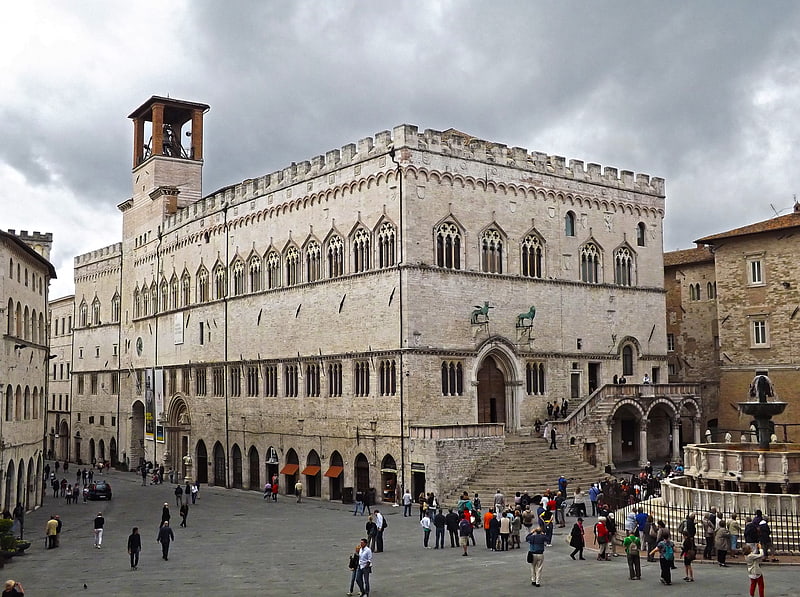
Palazzo. The Palazzo dei Priori or comunale is one of the best examples in Italy of public Palace of the età comunale. It is in the central Piazza IV Novembre in Perugia, Umbria. It extends along Corso Vannucci up to Via Boncambi. It’s still the seat of a part of the town hall and, on the third floor, it’s the seat of the Galleria Nazionale dell’Umbria. It takes its name from the Priori, the highest political authority, who governed the city in the medieval era.[1]
Address: Via dei Priori, 21, 06123 Perugia
Galleria Nazionale dell'Umbria
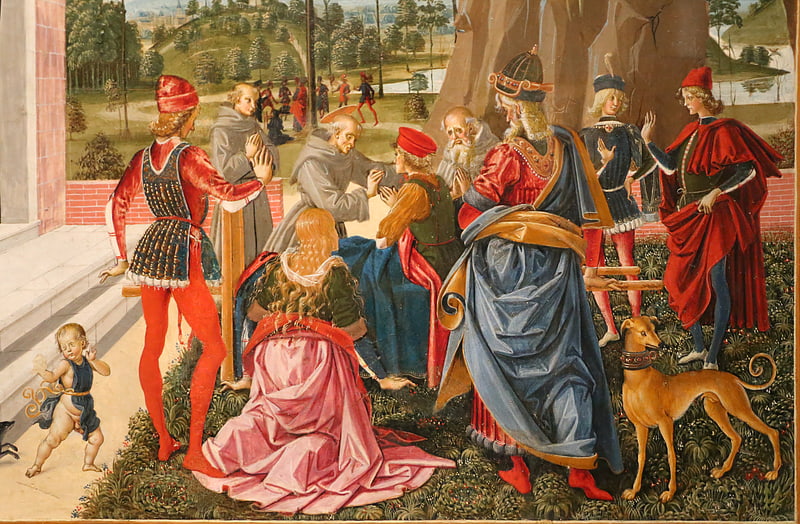
Also known as: Galleria nazionale dell'Umbria
Local artworks in medieval palace. The Galleria Nazionale dell'Umbria the Italian national paintings collection of Umbria, housed in the Palazzo dei Priori, Perugia, in central Italy. Located on the upper floors of the Palazzo dei Priori, the exhibition spaces occupy two floors and the collection comprises the greatest representation of the Umbrian School of painting, ranging from the 13th to the 19th century, strongest in the fourteenth through sixteenth centuries. The collection is presented in 40 exhibition rooms in the Palazzo. On the second floor of the Gallery, there is an exhibition space for temporary collections, changed several times a year.[2]
Address: Corso Vannucci 19, 06121 Perugia
Fontana Maggiore

Medieval fountain with fancy reliefs. The Fontana Maggiore, a masterpiece of medieval sculpture, placed in the centre of Piazza IV Novembre, is the monument symbol of the city of Perugia.[3]
Address: Piazza IV Novembre, Perugia
Palazzo della Provincia e della Prefettura

Palace. The Palazzo della Provincia e della Prefettura is a public palace of Perugia built over the ruin of the Rocca Paolina.[4]
Pozzo Etrusco
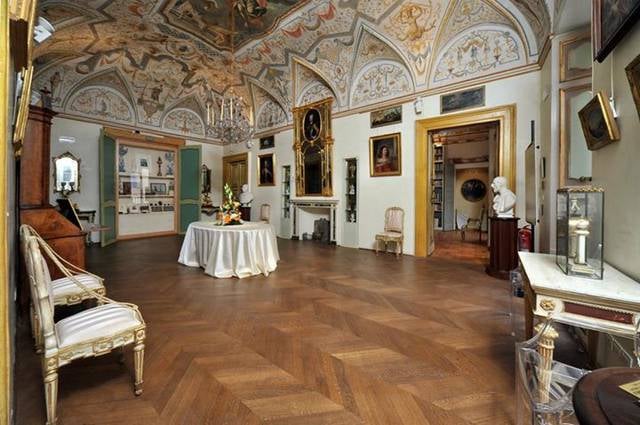
Museum in Perugia, Italy. The Etruscan Well, also known as "Sorbello well" from the name of the noble family which still owns the mansion which includes the structure, is located in the old town of Perugia. Entrance to the well, currently open to the public as a museum, is from no. 18 piazza Danti, through a covered walkway which leads to the underground sections of Palazzo Sorbello.[5]
Address: Piazza Piccinino, 9, 06122 Perugia
Stadio Renato Curi
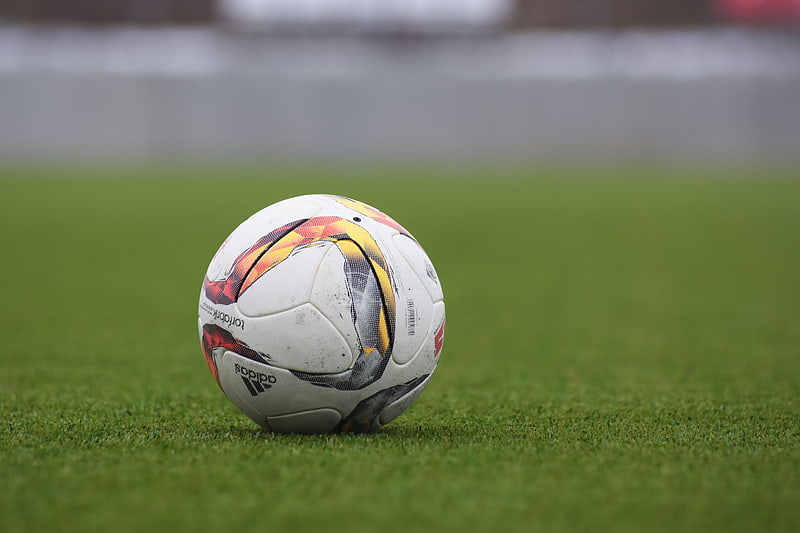
Stadium in Perugia, Italy. The Stadio Renato Curi is a football stadium in the Italian city of Perugia.
It is home to A.C. Perugia Calcio. The stadium is named after Renato Curi, who died from a heart attack during a game against Juventus on 30 October 1977. Its capacity is 28,000 spectators.[6]
Address: Viale Pietro Conti, snc, 06125 Perugia
San Michele Arcangelo
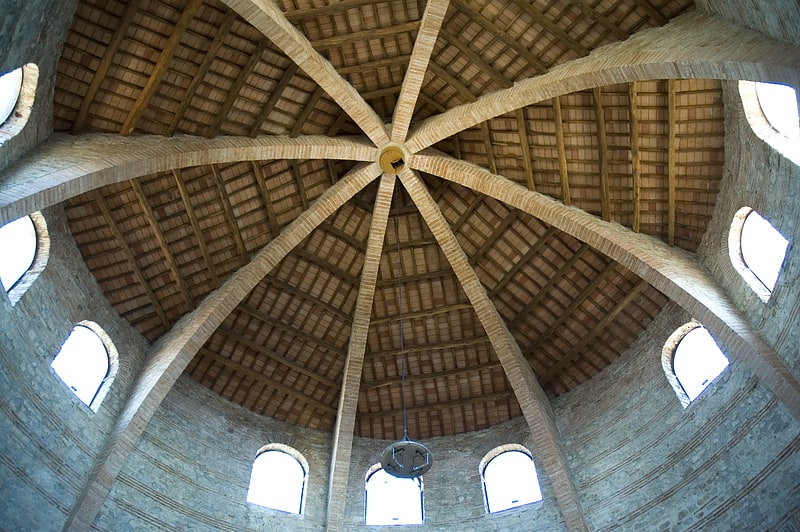
Catholic church in Perugia, Italy. San Michele Arcangelo, also known as Sant'Angelo, is a paleo-Christian temple in the city of Perugia in Umbria. The circular building dates to the 5th to 6th century, and incorporates corinthian capped columns from a prior pagan temple. It is dedicated to the Archangel Michael, whose churches were often located in elevated spots. The small round church is also often called Tempio or Tempietto, and is located in the neighborhood Borgo Sant'Angelo, near the ancient northern gate of the city.
The structure of the church has been altered across the centuries; in 1479, it was converted into a small fort. A major restoration occurred in 1948 that revealed ancient frescoes and sealed windows. The architecture is an early Romanesque with Byzantine influences in the chapel placement, but the circular temple is something seen in other ancient churches in central Italy, including the church of Sant'Ercolano and of San Giovanni Rotondo in Perugia. It recalls the church of Santo Stefano Rotondo (460-480) in Rome.[7]
Address: Via del Tempio, 7, 06123 Perugia
San Prospero
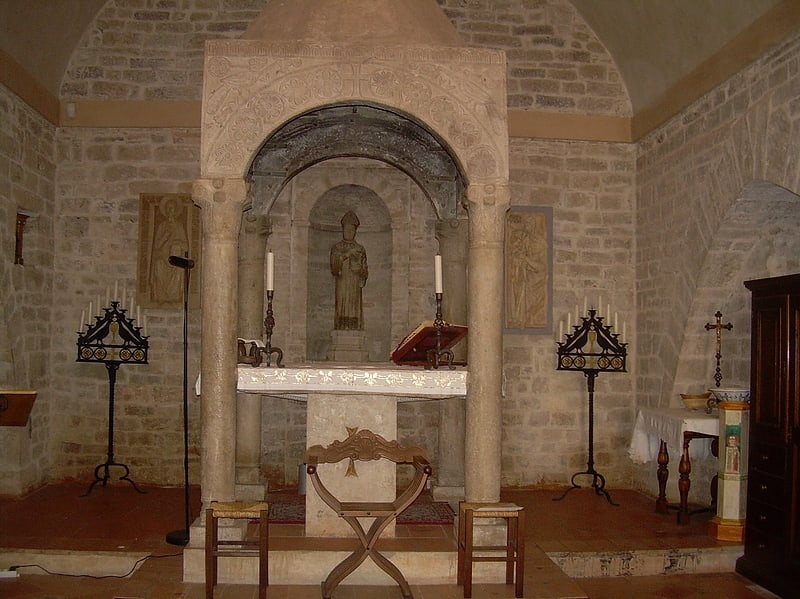
Chiesa of San Prospero is a religious building in Perugia, located in Via San Prospero, 7. Wheelchair accessible.[8]
Perugia Cathedral
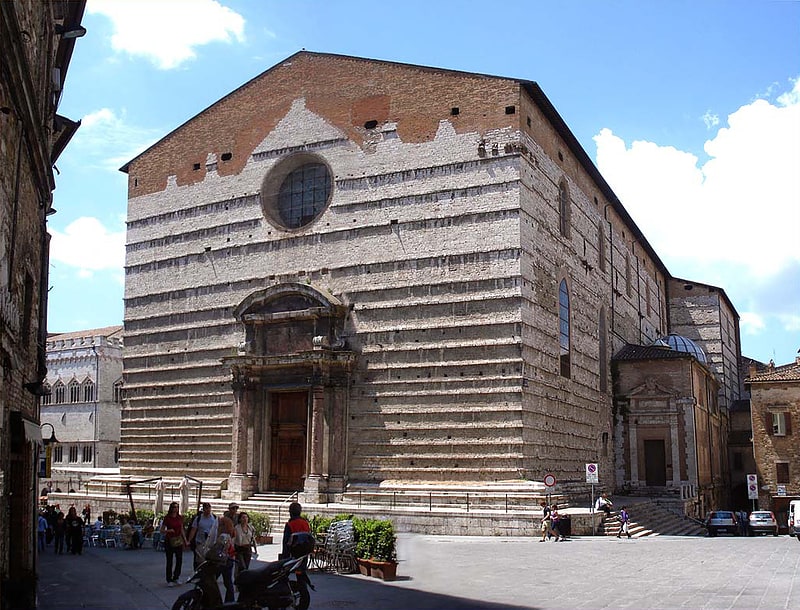
Also known as: Cattedrale di San Lorenzo
Gothic cathedral with adjacent museum. Perugia Cathedral is a Roman Catholic cathedral in Perugia, Umbria, central Italy, dedicated to Saint Lawrence. Formerly the seat of the bishops and archbishops of Perugia, it has been since 1986 the archiepiscopal seat of the Archdiocese of Perugia-Città della Pieve.[9]
Address: Piazza IV Novembre, 06123 Perugia
San Pietro Church
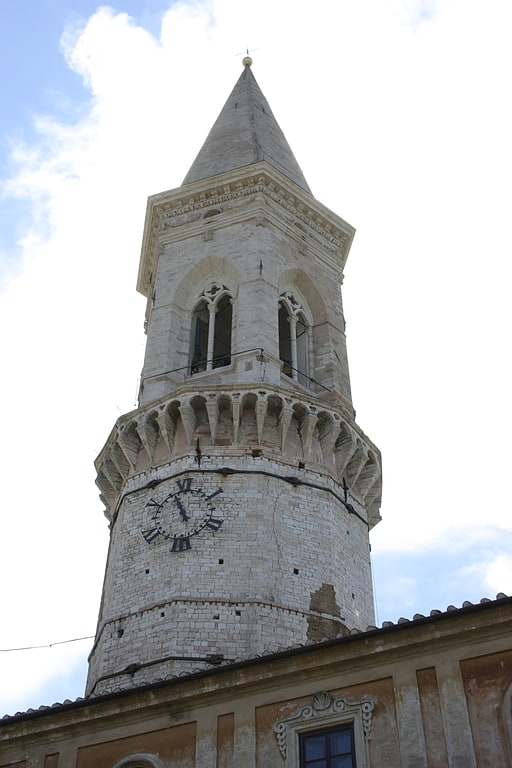
Also known as: Basilica di San Pietro
Ornate 10th-century Benedictine abbey. The basilica di San Pietro is a Catholic basilica and abbey in the Italian city of Perugia.[10]
Address: Borgo XX Giugno, 74, 06126 Perugia
Church of the Compagnia della morte
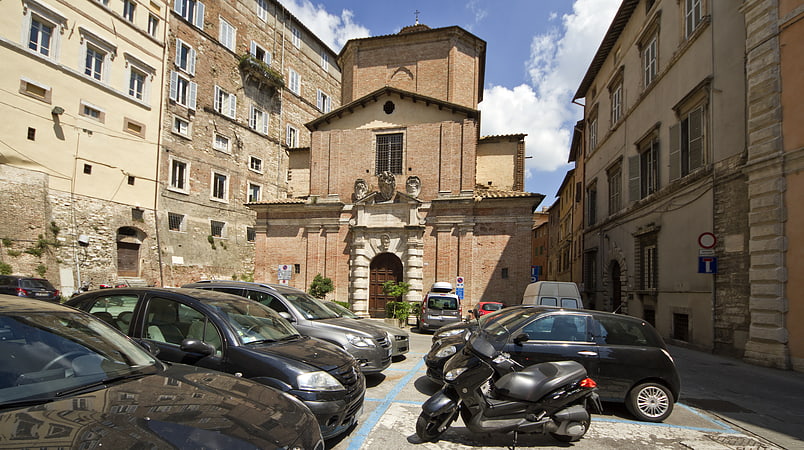
The Church of the Compagnia della Morte or Church of the Compagnia dell'Orazione e della Buona Morte is a church in the center of the Italian city of Perugia. It is located in Piazza Piccinino, a few steps from the Cathedral, in the district of Porta Sole.[11]
Città della Domenica
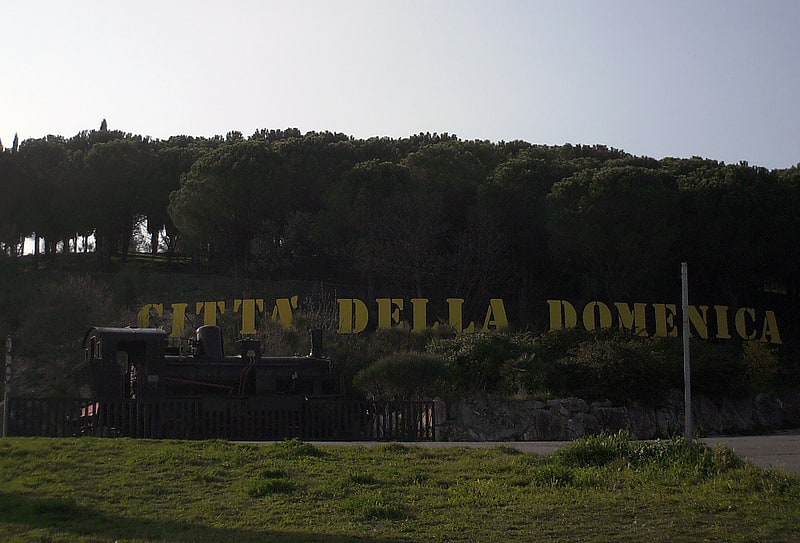
The Sunday City is a wildlife amusement park located in Perugia at Ferro di Cavallo. Opened on April 21, 1963, it was the first amusement park to open in Italy.
It was born on the initiative of Perugia entrepreneur Mario Spagnoli (1900-1977), son of Luisa Spagnoli, who in 1960 decided to transform the land he owned on Mount Pulito, on the outskirts of Perugia, into a family leisure park, a kind of ideal city that was initially to be named "Spagnolia."
Huge in size for the time, it spreads over several hills of Mount Pulito presenting, surrounded by dense Umbrian vegetation, fairy tale reconstructions, wildlife areas and small mechanical attractions for children.
In the 1960s it constituted a major novelty in the country, so much so that it earned the nickname Italian Disneyland. The reconstruction of Sleeping Beauty's castle and other buildings related to fairy tales, the construction of a path around a small lake to be traveled on board a small train, and the integration of the offer with a large panoramic restaurant, constituted in fact the first example of an Italian theme park.
Unlike other similar Italian and European facilities that arose during the same period, which subsequently increased the range of mechanical attractions on offer, the Umbrian park evolved by giving itself a didactic imprint, housing within it many species of animals in the wild (such as fallow deer, mouflon and peacocks) and others kept in enclosures (such as bison and the so-called white Asinara donkey - Equus asinus var. albina - which the park itself helped to reintroduce, thanks to a project conducted in the 1980s in collaboration with the University of Perugia). The little white donkey later became the park's mascot with the name "Burro."
In the 1990s, a well-stocked and well-maintained reptile house with crocodiles and giant snakes was set up inside the Tower that stands in the area in front of the entrance.
In 2013, the 50th anniversary year, the park's management introduced a number of new features, updating the range of shows and animations: in addition to the animation on the Farm, a children's show was introduced in the Far West area, featuring a duel between a sheriff and a bandit, and a Falconry show that for a period also featured the flight of the Griffon Vulture, an animal symbolic of the city of Perugia.
On Sept. 29, 2013 during its 50th anniversary celebration, a historical exhibition on Città della Domenica was opened, which can be visited free of charge on opening days.
In 2014, at the Sleeping Beauty tower and castle, the Medieval area was built where events and performances are held on weekends.
Castle of Montesperello
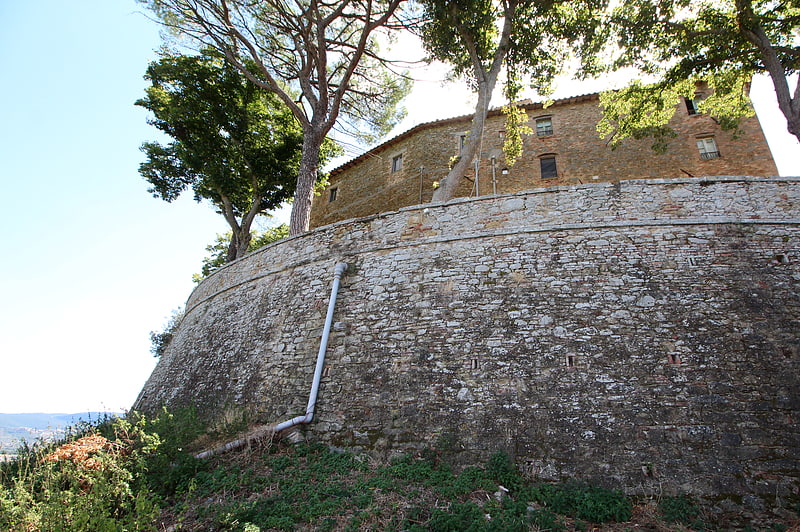
Castle in Monte Sperello, Italy. The Castle of Montesperello, is a castle located 1 km southeast of the Comune of Magione, which is part of the Province of Perugia, in Umbria, Italy. The Castle has been built during the Carolingian Empire on top of Mountain Penna. In the same area, traces of an Etrurian settlement are to be found.[12]
Collegio del Cambio
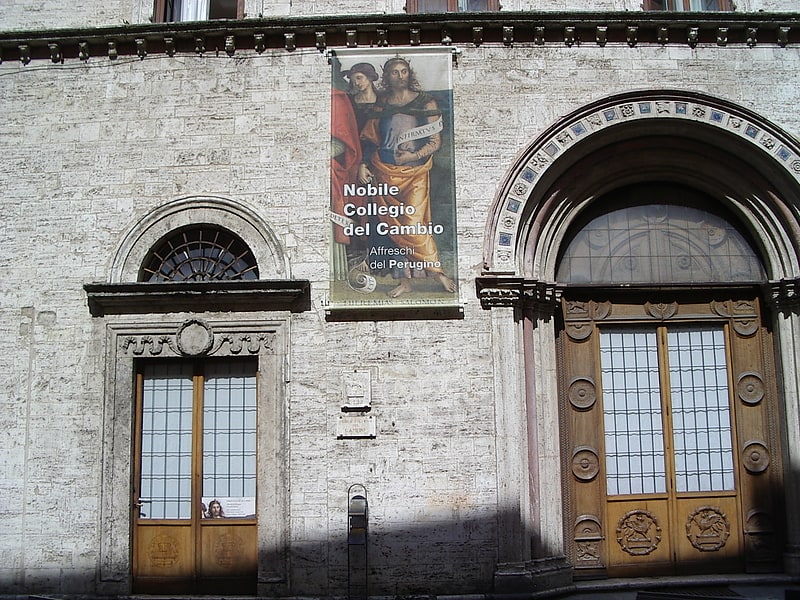
Museum in Perugia, Italy. The Collegio del Cambio, is the historic seat of the exchange guild in the Palazzo dei Priori in the city of Perugia, Italy. It was built between 1452 and 1457 and now houses a number of artistic masterpieces.[13]
Address: Palazzo dei Priori, Perugia
San Domenico Church

Also known as: Basilica di San Domenico
Catholic church in Perugia, Italy. San Domenico is a Roman Catholic basilica church, located on Piazza Giordano Bruno and via del Castellano in the city of Perugia, region of Umbria, central Italy.[14]
Address: Via del Castellano 4, Perugia
Arco Etrusco
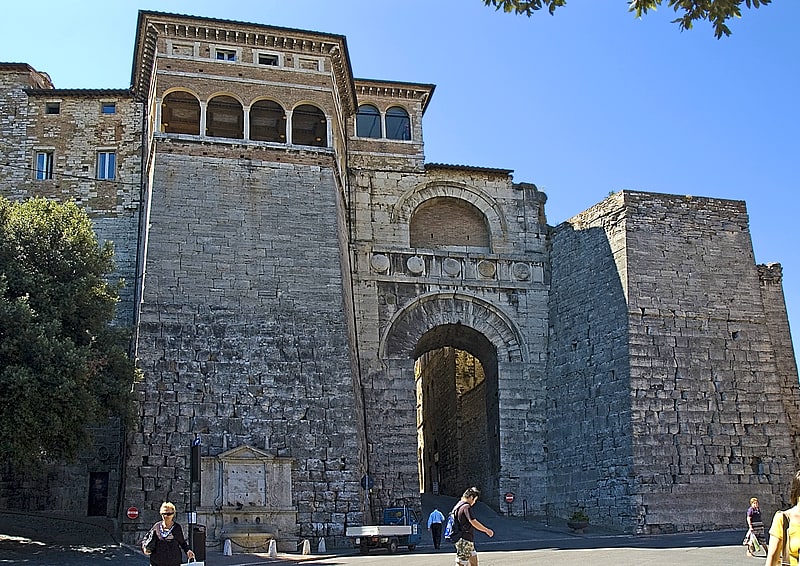
Historical landmark in Perugia, Italy. The Etruscan Arch or Arch of Augustus or Augustus Gate is one of eight gates in the Etruscan wall of Perusia, known today as Perugia. It is one of the only two surviving gates along with the Porta Marzia to the south. It was constructed in the second half of the 3rd century BC and was restored by Augustus in 40 BC after his victory in the Perusine War. Representing the best surviving and most monumental of the Etruscan city gates it opens onto the cardo maximus of the city, corresponding to the modern Ulisse Rocchi Road.
The arch is part of a massive set of walls which are 30 ft tall and 9,500 ft long made of travertine and set without mortar. It covers approximately a quarter of a square mile over three hills.
The arch consists of an attractive facade with a single archway and two trapezoidal towers. The archway forms a semicircular barrell vault passageway over 30 feet high. Two rows of voussoirs form the shape of the arch and are held in place by a keystone at the top. Above the arch there is an ornate Doric-inspired frieze of metopes with round shields and triglyphs in six vertical bands. Above this is another smaller voussoir arch between two pilasters making the height of the Etruscan Arch more than 60 feet.
On the internal face it is possible to read the inscription Augusta Perusia, which was the name of the city after the reconstruction of 40 BC; on the external face the inscription Colonia Vibia is inscribed, testimony to the ius coloniae received from Emperor Trebonianus Gallus.
The loggia on the left tower is an addition from the 16th century, while the fountain at the bottom of the same tower was completed in 1621.
In front of the arch is Palazzo Gallenga Stuart, the seat of the University for Foreigners Perugia.[15]
Address: Piazza Danti, 18, 06123 Perugia
Ponte San Giovanni
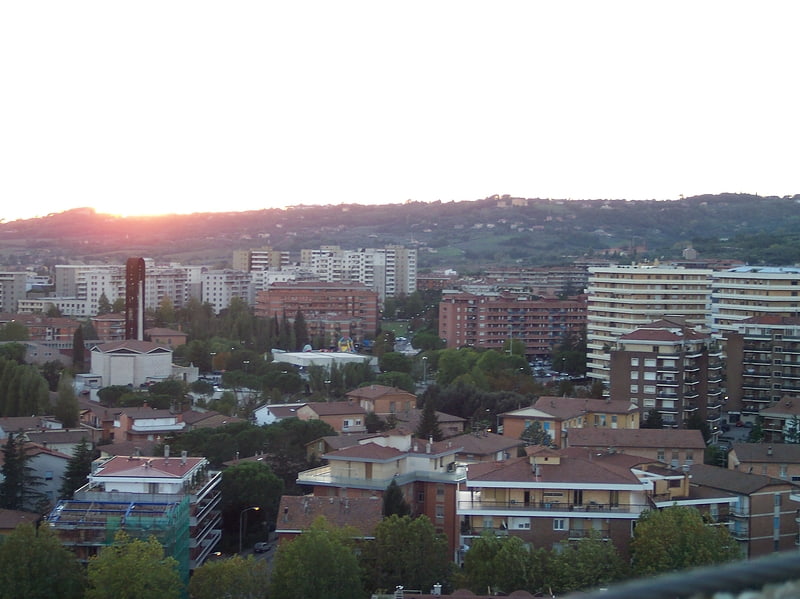
City in Italy. Ponte San Giovanni is a frazione of the city of Perugia, Italy. It has 13,296 inhabitants and is one of the largest and most populated neighbourhoods in the capital city of Umbria. It is also the seat of the eighth ward of the city of Perugia.
The city has also its own football team, A.S.D. Pontevecchio, currently playing in the Italian Serie D (fifth tier) and is the birthplace of Italian top-flight football manager Serse Cosmi. The local citizens are called ponteggiani.[16]
Ipogeo dei Volumni
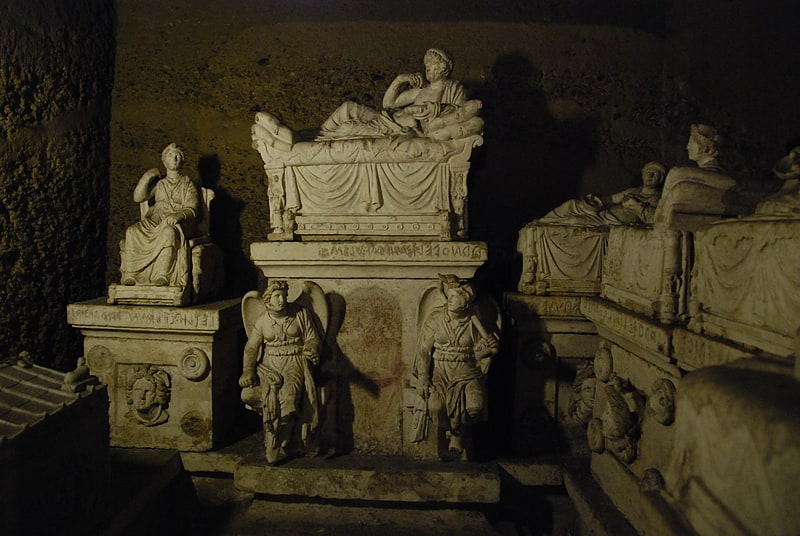
Museum in Perugia, Italy. The Hypogeum of the Volumnus family is an Etruscan tomb in Ponte San Giovanni, a suburb of Perugia, Umbria, central Italy. Its dating is uncertain, although it is generally assigned to the 3rd century BC.
The hypogeum was the Roman-Etruscan tomb of Arnth Veltimna Aules. It is part of the larger Palazzone necropolis, a burial ground dating to the 6th-5th century BC, with numerous subterranean tombs. Visitors can see and enter some of the tombs found along paths in the site's grounds. A museum building displays funerary urns and other artifacts found in the excavations of the area. More urns are displayed in the separate building covering the Volumnus tomb. The Volumnus tomb itself is accessed by a staircase which leads several metres under the surface to the portal leading inside to a vestibule. This in turn opens into four small side chambers and three larger central ones, the middle of which housed the remains of the family's main members. Only this chamber now displays burial urns and artifacts. Arnth's urn is made of travertine, and is surmounted by a representation of the deceased lying on a triclinium.
The tomb was used until the 1st century BC. It was rediscovered on 5 February 1840.[17]
Address: Via Assisana, 8, 06126 Perugia
Porta Marzia
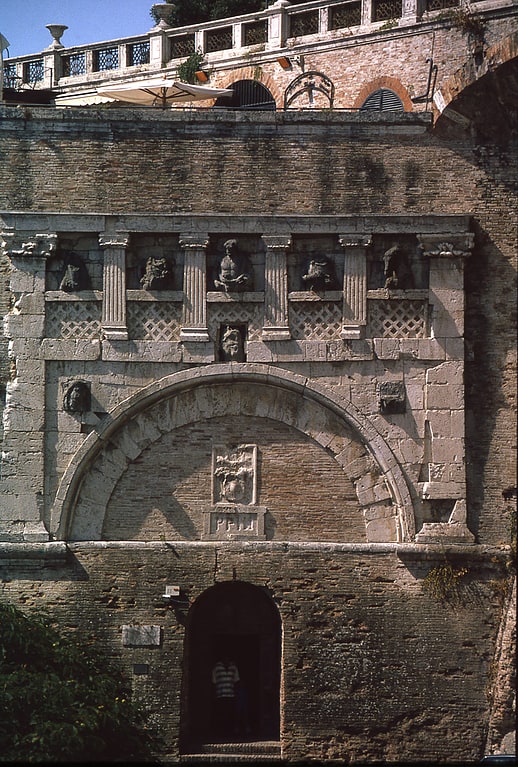
Historical place, City gate
Orto Medievale
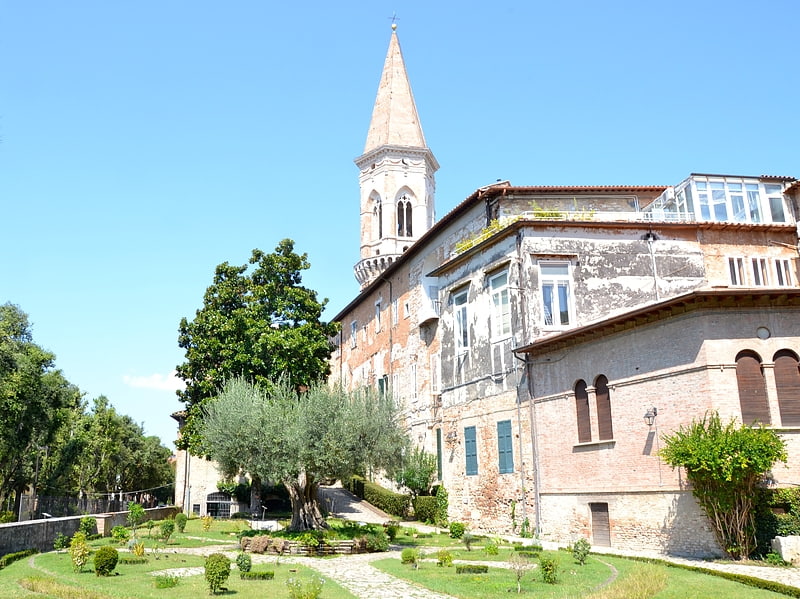
Also known as: Orto botanico di Perugia
Botanical garden in Perugia, Italy. The Orto Botanico dell'Università di Perugia is a botanical garden operated by the University of Perugia. It is located at Borgo XX Giugno 74, Perugia, Umbria, Italy, and open to the public daily.
Today's garden was established in 1962 between Via San Costanzo and Via Romana, as a successor to Perugia's first botanical garden (1768), which was moved and re-established several times over the centuries. It currently contains about 3000 species, including:
- Aquatic plants - Azolla filiculoides, Caltha palustris, Cyperus papyrus, Eichhornia crassipes, Iris pseudacorus, Lemna minor, Ligularia tussilaginea, Lythrum salicaria, Nelumbo nucifera, Nymphaea, Pistia stratiotes, Salvinia natans, and Trapa natans.
- Arboretum - Castanea, Fagus, Loranthus, Populus, Quercus, Salix, and Viscum.
- Fruits - Amelanchier, Carica papaya, Carya olivaeformis (C. oliviformis, a synonym of C. illinoinensis), Coffea arabica, Fragaria, Malus, Musa, Nephelium litchi, Piper nigrum, Psidium, Ribes, Rubus, Prunus, and Sorbus.
- Succulents - Aeonium, Aloe, Bowiea volubilis, Cereus, Ceropegia, Cotyledon, Crassula lycopodioides, Espostoa, Euphorbiaceae, Gasteria, Haworthia, Kalanchoe, Pachypodium, Sedum, Sempervivum, and Stapelia.
- Tropical and subtropical plants - Cajanus cajan, Cucurbita foetidissima, Dracaena draco, Erythrina crista-galli, Feijoa sellowiana, Persea americana, Plumeria alba, Psophocarpus tetragonolobus, and Tamarillo.
- Useful plants - Althaea, Angelica, Atropa, Carlina, Conium, Digitalis, Humulus, Inula, Levisticum, Malva, Marrubium, Mentha, Rheum, Salvia, Satureja, Solanum, Tanacetum, Thymus, and Valeriana.
It also contains an alpine garden, zen garden, a large collection of Hydrangea, and greenhouse (700 m²).[18]